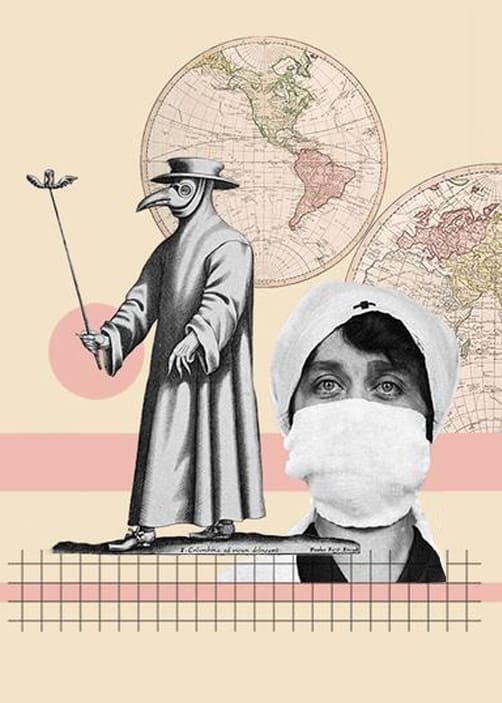Covid-19 Will Lead to Far Reaching Changes in Academia
Whether it’s careers, costs, teaching or conferencing, the pandemic will touch every aspect of academic and university life. Whilst the winners and losers are not yet clear, long-term change is certain.
This essay is part of the series “The New Normal: Perspectives on the Impact of Covid-19 on Academia”.
‘The new normal’ is likely to have several important dimensions. It will be driven by economic exigencies as well as new perspectives gained by faculty, students and administrators as a result of their experiences in the pandemic.
Mounting Pressure
First and foremost, universities will continue to face enormous cost pressures stemming from an extended economic recession as well as ongoing changes in student demand and technology. This means more emphasis on non-tenured and part-time faculty and online instruction than before the pandemic, thus accelerating these previous trends.
Universities will also face pressures to reduce their administrative costs (which have risen faster than instructional costs in recent years) and probably facilities costs too since now, there will be less need for classroom and dormitory space and less focus on sports and other ‘luxury’ items.
Finally, expect that a number of higher education institutions will fail – or be forced to change. Some will go out of business entirely, others will consolidate with other institutions. In the US, these will include smaller private colleges especially, which are not sustained by endowments or state funds and which cannot easily reduce costs through online instruction for fear of losing their special character as teaching institutions. All these pressures will be exacerbated if current policies restricting foreign students are not reversed. Alternatively, more progressive immigration policies could cushion some of these pressures.
Online Futures
The pandemic has allowed students and faculty to become more comfortable with online instruction and programming, so that virtual learning will become a larger part of universities’ portfolios than it would have otherwise, if not for the pandemic experience. We’ll see a richer mix of online and in-person instruction too. Online works well for small classes and classes that rely on technical lecture material, as opposed to discussion. And many faculty and staff members have found that they like to work from home.
Moreover, online instruction extends the reach of courses to broader geographic venues and audiences and obviates the need for student commuting or on-campus residence. This may help universities and colleges strengthen their student markets through more convenient and less costly offerings, though it may favour better known national or state institutions over local, lesser known ones. Lastly, the increasing attractiveness of online programming may allow for-profit institutions to make greater inroads into higher education, although they could face a backlash due to quality lapses.
[mailpoet_form id=”2″]
Virtual Research
The experiences with online conferencing during the pandemic will also lead to greater emphasis on virtual research conferencing in the future. Although much is lost without in-person networking, many participants, especially older individuals and/or those with limited economic means, have benefited from online accessibility to research and other professional conferences. In the future, I think most academic conferences will include an online option and some mix of online and in-person activity.
“The pandemic experience will have a mixed effect on international and national collaborative research.”
The pandemic experience will have a mixed effect on international and national collaborative research. The restrictions on travel have forced these collaborations online, but at the same time have reduced the opportunities to form new collaborations. As a result, international research collaboration will continue to expand, but its rate of expansion will depend on in-person travel which is likely to remain limited for the foreseeable future.
As far as libraries and journals are concerned, costs and accessibility remain prime concerns. In both cases this favours online and electronic forms of publication as well as open access publication. Pre-publication of research will also grow, as researchers seek more outlets for their work and greater opportunities to exchange information outside in-person conferencing. Professional associations may take a larger role in facilitating these pre-publication information exchanges through various online means.
Winners and Losers
There will be winners and losers although at the moment, it’s hard to spot the winners. Losers will include career academics who will face more limited opportunities for employment and remuneration, and university administrators who will have to accommodate reduced overhead, administrative salaries, and streamlining of inefficient regulatory practices that inhibit academic productivity. Winners may ultimately include lower income students who can take better advantage of online instruction for career development.
Professional programs including management, health care, social work, and engineering will be favoured for future instruction because demand will be driven more strongly by future employment prospects. Support staff for technology, and instructors who are more technologically sophisticated will also be favoured for their greater online effectiveness. More basic liberal arts and sciences instruction will struggle and face cutbacks and conversion to online programming in large classes. Part-time and adjunct instructors will continue to increase at the expense of full-time instructors, and the latter’s course loads will increase.
In Summary
In the end, nothing is certain but it’s clear the virus will impact every area of academic and university life. Perhaps the only upside could be that the US federal government’s mishandling of the situation could herald political change. A fresh Democratic administration and Congress could turn some things around, including the affordability of higher education, investments in research, and international collaboration.
We recommend this related collection of think pieces
[Title Image by Mohammad Shahhosseini via Unsplash]
